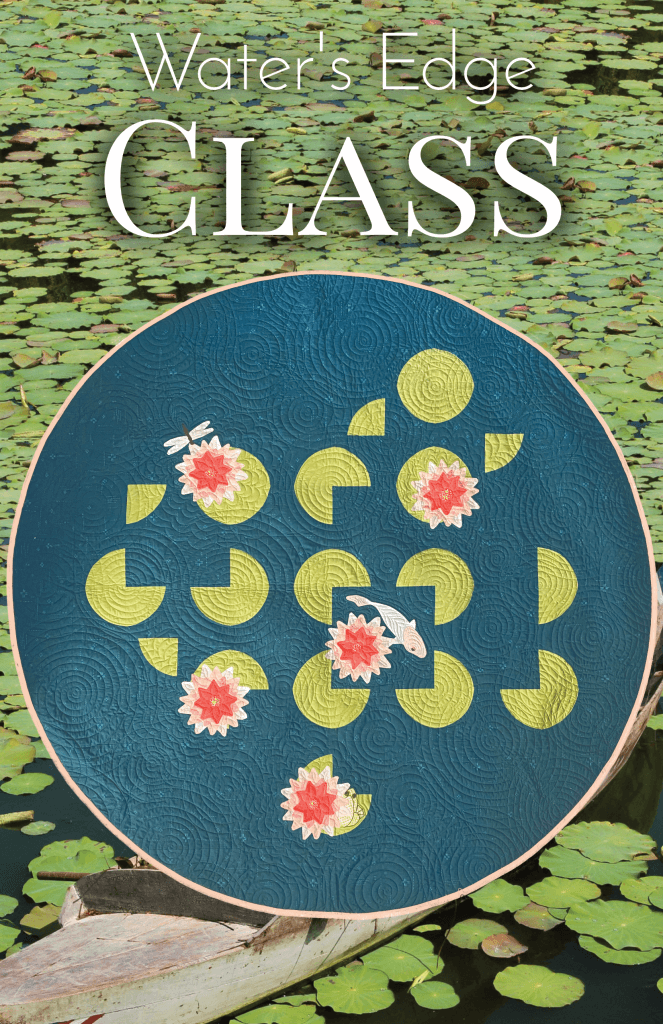Class begins in March 2023! Are you signed up?!

I am so excited to be offering my virtual class for the new and exciting Water’s Edge quilt pattern! In this class we are going to have so much fun and work through some new skills that you may have not seen before.
If you’d like to get full access, you’ll need to join my Water’s Edge class. There is lots to know about this virtual program, so keep scrolling to get all the details.
Already a member? No problem! Log in below:
Why Virtual?
If you’d consider yourself a beginner or a visual learner, then you should really consider this class. I’ll be covering each and every step of the pattern in video so that you gain a deep and full knowledge of each technique and really grow in your quilting skills.
I love virtual classes because you can work through them at your own pace! Pause on that tricky bit, rewind, and watch when you’ve got time. No working around my crazy schedule, just log in and work through the class at your own pace. If you need a little extra help, you can always get in touch with me for clarification.
In class We’ll be…
In this class we’ll be covering everything you need to know about:
- Curved piecing
- This is a great primer to piecing with any quarter circle template, but you’ll also be introduced to my new 5″ quarter circle template.
- Invisible Machine Stitch Applique
- You might be familiar with Applique, but have you tried Invisible Machine Stitch?! It’s an incredible way to create clean lines that look hand-stitched!
- Embriodery
- There are some great optional embroidery details in this quilt. I’m going to go over each and every stitch with you so that you’ll have the confidence to put these sweet details on your piece.
- The basics
- I started with all of the exciting things, but we will of course go over all of the basics in the pattern like:
- cutting
- piecing blocks
- piecing the top
- ideas for quilting and finishing!
- I started with all of the exciting things, but we will of course go over all of the basics in the pattern like:
Sign up Today!
So…what are you waiting for?! Grab a pattern, claim your spot in class, and get your fabrics and supplies ready. I’ll see you in March!
Please note that all classes require the purchase of the pattern.
FAQ

How long do I have to complete the class?
The beauty of virtual is that you can work at your own pace – indefinitely! This class will be yours for a lifetime. Log in any time to access this or any other class that you’ve purchased.
Your Class Portal
Logging In
All of your class information will be available in your dashboard when you log in. There is a login button available on my website when you click on the CLASS tab at the top of any page, or you can go straight to login by clicking below:
Navigating your Portal
Once you’re logged in, you’ll be able to have full access to your user profile, past orders, downloads, and of course your classes! You can navigate there through the left sidebar (Just click on “My Classes”) once you log in.
Have more questions?
Feel free to get in touch with me through my contact page, I’ll be happy to answer any questions you might have!


